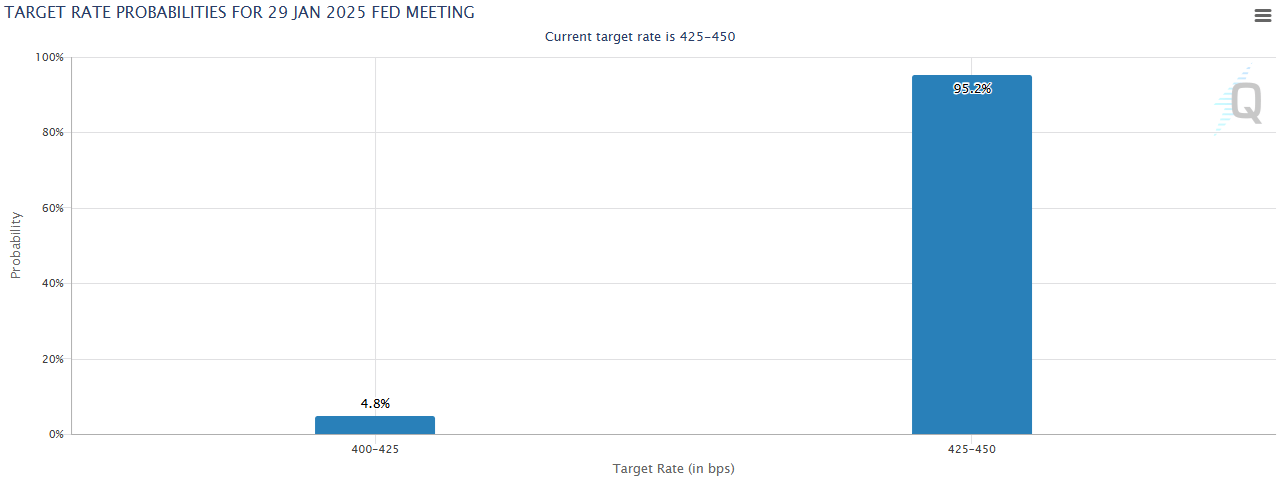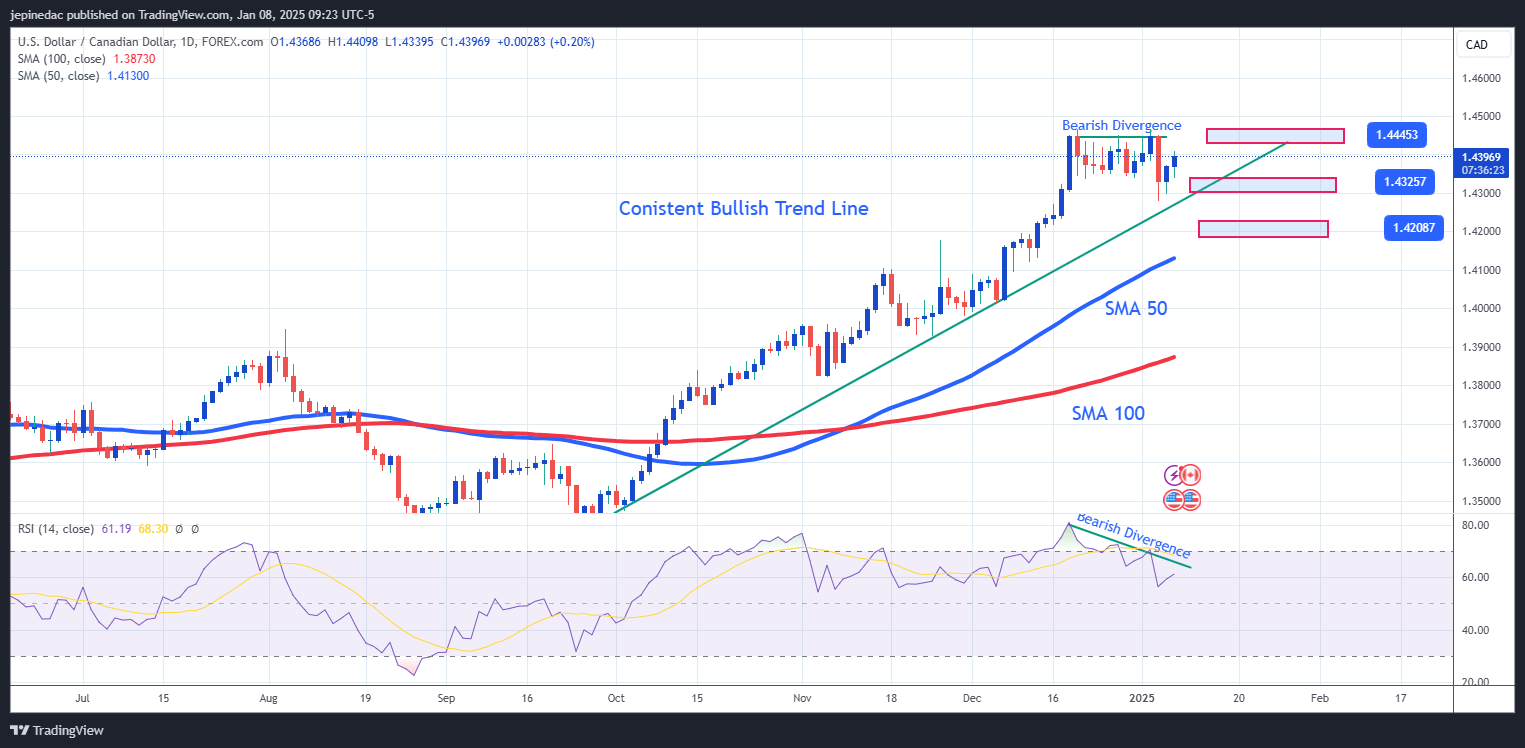
- USD/CAD is refusing to decline and is once again approaching the resistance zone at 1.4445, as political uncertainty in Canada continues to exert downward pressure on the Canadian dollar.
- The Fed has emphasized the need to slow the pace of interest rate cuts, a crucial factor in maintaining the long-term strength of the U.S. dollar and sustaining bullish pressure on USD/CAD.
Despite the recovery shown by the Canadian dollar two sessions ago, the balance has now shifted 0.5% higher in favor of the U.S. dollar, keeping USD/CAD near levels not seen in the past four years. The imminent departure of Trudeau from the presidency has left political uncertainty, undermining confidence in the Canadian dollar and potentially increasing downward pressure on this currency.
The End of an Era – Trudeau Resigns
For several months, it was known that the Liberal Party wanted Trudeau to leave office. The pressure grew until the current Prime Minister decided to step aside to allow a new administration to take charge in Canada. On January 6, Trudeau announced that he would remain in office until the party selects a new leader. In his own words, he admitted he is not the best candidate to represent the country in upcoming elections, which are likely to be moved up from October.
This series of events has generated political uncertainty, especially due to the tariff threats Canada faces with the new U.S. administration. Additionally, no leader currently appears capable of addressing these political and economic challenges. In this context, it is understandable that the market opts for the U.S. dollar as a more stable option, intensifying bullish pressure in the main USD/CAD movements in recent sessions.
What Are the Central Banks Saying?
The next decision by the Bank of Canada is scheduled for January 25, 2025. For now, the institution is expected to maintain a "dovish" outlook, considering the positive performance of inflation and low economic growth. This could lead to a 50-basis-point reduction, bringing the rate to 2.75%.
Meanwhile, the Fed remains firm in its strategy to slow rate cuts, as mentioned on several occasions, primarily because the U.S. is still far from its 2% inflation target. According to the CME Group’s probability chart, there is a 95% chance that the interest rate will remain at current levels (4.25%-4.5%) during the central bank’s next decision on January 29.
Interest Rate Probability Chart for January - CME Group

Source: CMEGroup
In relation to the above, the Fed’s interest rate (4.5%) remains significantly higher than that of the Bank of Canada (BOC), which stands at 3.25%. With a neutral outlook in the U.S. and a dovish perspective in Canada, investment is likely to flow toward the U.S. dollar due to the higher interest offered, which could continue to drive buying pressure on USD/CAD.
USD/CAD Technical Forecast
USD/CAD has maintained a steady upward trend since late September 2024, reaching a peak in the 1.4467 zone. The differing outlooks of the central banks and Trudeau’s departure have kept the price near these highs.

Source: StoneX, Tradingview
- Consistent Trend: The price maintains steady upward movements above the trendline, and for now, the 50- and 100-period simple moving averages continue to show an upward slope with no crosses that could jeopardize the current trend. However, it is almost essential for the price to set a new high above the 1.4445 zone to confirm the strength of the long-term uptrend.
- RSI Divergence: Equal highs in price movements and lower highs in the RSI indicator have created a bearish divergence, indicating an imbalance in recent buying movements, which could lead to short-term bearish corrections. Additionally, as the RSI line moves closer to the 50 level, it could signal indecision in the current resistance zone for buying movements.
Key Levels:
- 1.44453: The current resistance level, corresponding to the zone marked by the latest highs in the uptrend. Oscillations above this level strengthen buying interest and could extend the uptrend.
- 1.43257: A new support zone, coinciding with the recent trading session lows and converging with the upward trendline marked on the chart. Bearish corrections could find support at this level during upcoming sessions.
- 1.42087: A key support level that previously served as resistance, respected in mid-December 2024. Oscillations near or below this level would jeopardize the current uptrend formation and create a new scenario in favor of the Canadian dollar.






